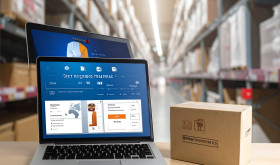
In today’s integrated digital economy online businesses always look for ways to make their operations better and give customers a smooth experience. To achieve this, one key part is to connect an e-commerce platform with an Order Management System (OMS). When these systems work well together, data flows smoothly between sales channels and order fulfilment processes making everything more efficient, accurate, and able to grow. This article will look at why this connection matters common problems, and good ways to put together a successful e-commerce and OMS integration.
Why E-Commerce and OMS Integration Matters
Online stores use platforms like Shopify, Magento, WooCommerce, and BigCommerce to run their websites, handle payments, and help customers. As a web store gets bigger, keeping track of orders becomes tricky when selling through different channels managing stock in various places, and meeting customer needs. An Order Management System (OMS) helps businesses to handle, monitor, and deliver orders across these channels.
Adding an Order Management System to an online store platform can change how a business runs by:
1. Streamlining Order Processing: Automation of the process from order placement to fulfilment makes sure orders get processed fast and right.
2. Centralised Data Management: The integration brings together all sales and order data in one system giving real-time insights into stock levels, customer orders, and fulfilment status.
3. Enhanced Customer Experience: Quick and correct order fulfilment leads to faster delivery times and fewer mistakes, which results in happier customers.
4. Scalability: As companies grow, an integrated system allows them to scale handling more orders and new sales channels without much manual work.
These benefits show why integration is valuable. The next step is to understand the challenges and come up with plans for successful integration.
Common Challenges in E-Commerce and OMS Integration
While integrating e-commerce platforms with Order Management System systems offers clear advantages, companies often run into several roadblocks. These issues span from tech hiccups to workflow snags:
1. Complexity in Multi-Channel Sales: Handling orders across various sales channels like marketplaces (Shopee, Lazada, Tokopedia, eBay) social media platforms, and direct-to-consumer websites can cause problems. If businesses don’t integrate these channels, they might face inventory inconsistencies and delayed orders.
2. Data Syncing Issues: It’s challenging to keep inventory, customer data, and order details in sync between the e-commerce platform and the Order Management System in real-time. When syncing lags or has errors, it can result in selling more than what’s available running out of stock, or filling orders.
3. Customisation and Flexibility: E-commerce platforms and Order Management System solutions differ in how much you can change them. Ready-made options might not match your business needs forcing you to build custom links. This can cost a lot and take a long time.
4. Scalability: As companies expand and receive more orders, they face problems managing large volumes across multiple warehouses, carriers, and areas without a strong connection between systems.
5. Third-Party Dependencies: Many businesses count on outside vendors to fulfil orders, drop ship, and handle logistics. Making sure these external systems work with both the e-commerce platform and the Order Management System adds another layer of difficulty.
To tackle these issues, companies must put into action well-crafted integration plans that boost operations and back long-term expansion.
E-Commerce and OMS Integration Plans
Integrating an e-commerce platform with an Order Management System calls for a smart approach, one that keeps in mind the specific requirements and aims of the business. Here are key plans to help steer this process:
1. Pick the Right OMS for Your Company’s Needs
The first move towards a successful union is choosing an Order Management System that fits your business operations. The ideal OMS should not join up with your e-commerce platform but also fit your growth plans, sales channels, and delivery processes.
Important features to consider in an Order Management System include:
– Multi-channel order management: Combines all orders from different sales channels into one system.
– Inventory management: Tracks inventory in real-time across warehouses, stores, and distribution centres.
– Shipping and fulfilment: Automates shipping processes, picks carriers, and handles shipping rules.
– Returns management: Deals with returns and exchanges to keep customers happy.
– Analytics and reporting: Provides access to performance metrics and order data to spot bottlenecks and chances to improve.
Make sure your chosen Order Management System works well with your current e-commerce platform and other tools in your tech stack (ERP, CRM, shipping carriers, etc.).
2. Make Real-Time Data Syncing a Top Priority
In online retail, syncing data in real time is key. When a shopper buys something, changes their delivery details, or when a product comes back in stock, these updates need to show up right away on both the online store and the Order Management System.
Think about using APIs or middleware to let your online store and Order Management System talk to each other. This quick data sharing makes sure that:
– The system catches orders right away, cutting down on wait times.
– Stock levels update on the spot, which helps avoid selling things you don’t have or running out of stock.
– Customers get their shipping info and tracking numbers without delay.
APIs have an influence on two-way communication allowing data to flow between systems. When you assess integration tools, make sure they support real-time syncing and work with both your e-commerce platform and Order Management System.
3. Automate Order Fulfilment
Automation plays a key role in successful e-commerce and Order Management System integration. To automate important steps in the order fulfilment process helps you cut down on manual errors, speed up delivery times, and boost operational effectiveness.
Automation features to put into action include:
– Automated order routing: Assign orders to the right warehouse or fulfilment centre based on where the customer is, if the product is in stock, or shipping rules.
– Automated shipping label generation: Create and print shipping labels for orders picking the best carrier based on shipping cost, speed, and what the customer wants.
– Automated tracking updates: Send shipping confirmation emails and tracking numbers to customers keeping them in the loop during delivery.
Automation helps your business grow without needing to hire more people or handle orders by hand, which saves money and speeds up order processing.
4. Ensure Scalability and Flexibility
As your business expands, your e-commerce platform and Order Management System integration need to grow with it. Think about these approaches to make sure you can scale up:
– Cloud-Based Solutions: Cloud-based e-commerce platforms and Order Management System solutions give you the ability to scale your operations without needing more on-site infrastructure. Cloud systems can handle big order volumes multiple warehouses, and complex fulfilment networks.
– Modular System Architecture: Look for systems that let you upgrade and add modules. This means that as your business grows, you can add new sales channels, fulfilment centres, or shipping carriers without major disruptions.
– Third-Party Integrations: Pick an Order Management System that works well with third-party logistics (3PL) providers, drop shipping vendors, and other outside partners. As your business expands, you might need to outsource parts of your supply chain to meet what customers want.
### 5. Test and Optimise the Integration
Before you launch your integrated e-commerce and Order Management System setup, you need to test the system. Your testing should cover:
– Order flows: Check orders from different sales channels to make sure the OMS captures and processes them.
– Inventory updates: Confirm that inventory levels sync in real-time across warehouses and sales channels.
– Shipping automation: Check that shipping rules and carrier selection work as planned, and customers get tracking updates.
After launch, keep an eye on how well the integration performs. Use analytics and reporting tools to spot inefficiencies or bottlenecks and keep tweaking the system to boost its performance.
### 6. Train and Support Your Staff
For your integration to succeed, your staff needs to know how to use the systems well. Give thorough training to warehouse workers, customer service reps, and fulfilment teams to make sure they grasp how the integrated system works. Clear communication and well-documented work steps will help to avoid mistakes and keep operations running.
## Conclusion
Connecting an e-commerce platform to an Order Management System plays a key role in making operations smoother, boosting customer happiness and growing an e-commerce business. By following the steps we’ve talked about in this article—picking the right OMS focusing on real-time updates, automating order processing, making sure the system can grow checking the connection works, and teaching your team—companies can link these systems in a way that helps them grow over time.
As online shopping keeps changing, having systems that work well together will become even more important to stay in the game in a busy market.










